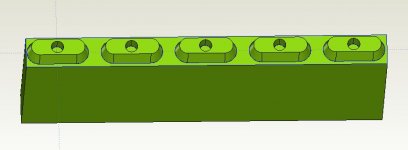.
not everybody has a lathe with live milling tooling
Then it is the managers responsibility to learn what parts that he is, and is not equipped to process efficiently, and what to doo about that.
A) N/Q
B) Take risk farming it back out - in effort to keep customer coming to him.
C) Quote at the higher / inefficient price, and hope that the buyer doesn't locate someone that can run cheaper...
D) Buy high $ equipment that he kant otherwise justify, to run otherwise cheap parts.
E) Run them the hard way for a break even rate.
D/E = ...and then spew drama all over message boards about drain circling and all that rot - simply b/c they chose to engage in a process that they were not efficient at.
... at least that's how I see it...

On a job involving up to 1000 pc qtys, the non-efficient 1pc "Toolroom" process is not helpfull.
edit:
If I was to run these on a mill, I would NOT use a tapered endmill, and would instead use custom ground woodruff key type cutter.
Run the part upside down.
Cut off the host material with a slitting saw.
If required - you could re-fixture and skim cut the top, but that would be a lot of werk for little gain IMO.
Toss in Vibe and an hour later - you have parts!
I know that I read some ideas involving woodruff cutters and such. I didn't follow along too close.
This same idea may have been recommended in whole or in part already.
I think this process could be reasonably competitive.
EDIT II:
The whole reason that I mentioned upside down was to allow flipping and clamping, but if the slitting saw does a nice job (which it should) you could run it right side up. I was not in the mind of the slitting saw when I started the reply.
If running right side up, you could gang strait off the bar with the small kerf loss of the tapered mill.
If going the route of the tapered woodruff cutter, then you would want to saw blanks ahead of time as the woodruff cutter would waste too much material between parts.
--------------------
Think Snow Eh!
Ox





